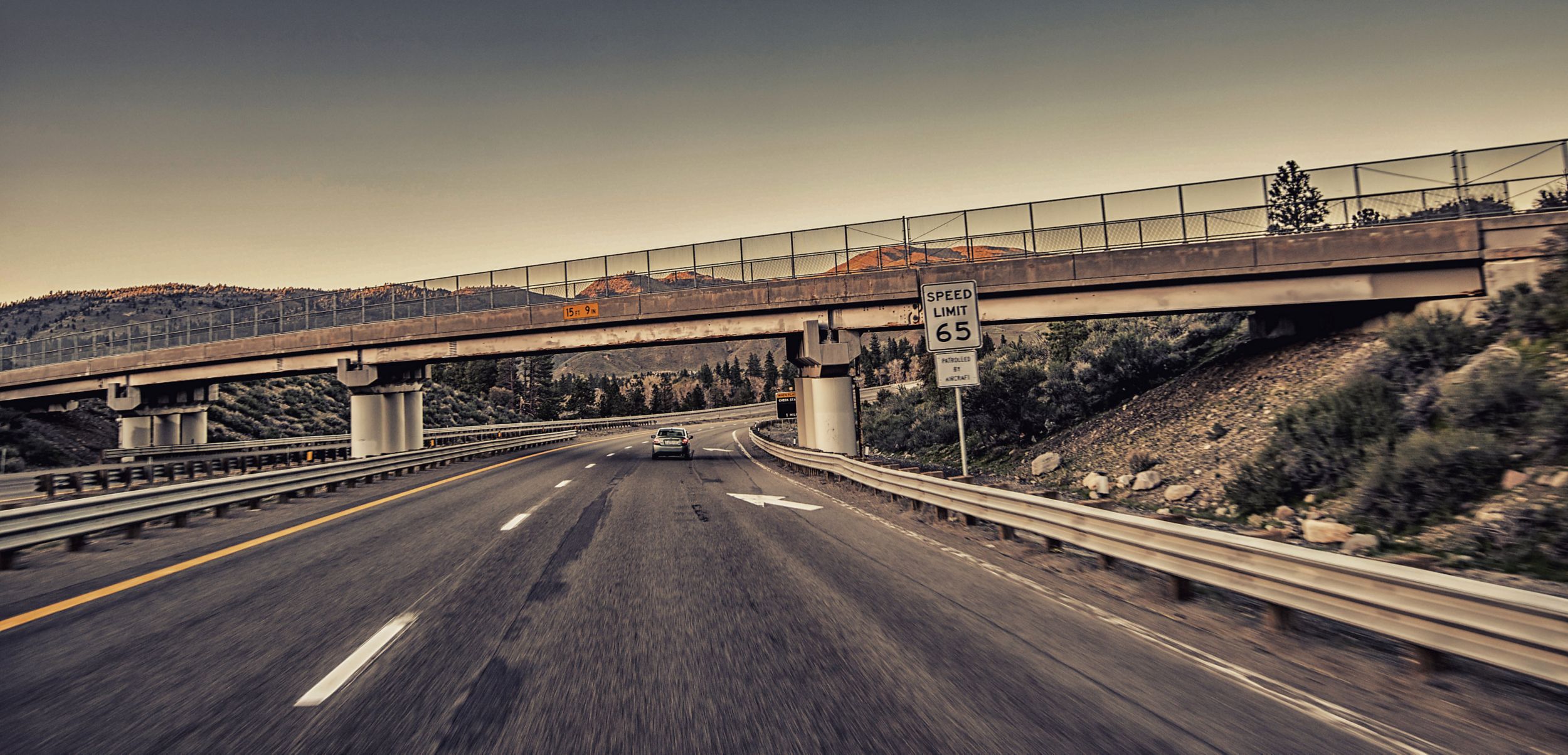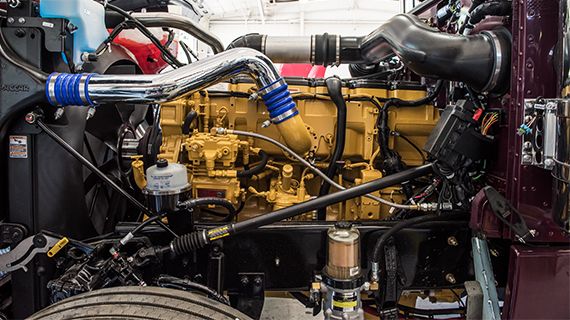

Sign In
Welcome! Sign In to personalize your Cat.com experience
If you already have an existing account with another Cat App, you can use the same account to sign in here
Register Now
One Account. All of Cat.
Your Caterpillar account is the single account you use to log in to select services and applications we offer. Shop for parts and machines online, manage your fleet, go mobile, and more.
Account Information
Site Settings
Security
4 On-Highway Truck Engine Tips to Save You Fuel & Money
Turn to these truck engine tips to keep your hauler running longer and more efficiently, with one simple step that could cut cost per hour by 80 percent.
By Caterpillar | Posted: May 11, 2022
Looking for ways to save money? These four tips will help you improve your fuel economy — and boost your bottom line — even further.
Truck Engine Tip #1: Slow Down
The easiest way to save the most fuel is to slow down. The faster you drive, the greater the horsepower demand on your engine and the more fuel your truck must consume to meet it. For every mile-per-hour decrease in speed, you can save about a tenth of a mile per gallon in fuel. In other words, you can increase fuel economy by half a mile per gallon just by slowing down 5 mph.
Over the course of a year, that small decrease in speed can add up to big fuel savings — making it worth slowing down a bit during a busy work day. Just leave a little earlier and give yourself plenty of time to reach your destination.
Truck Engine Tip #2: Coast Farther
When you take your foot off the throttle — or shut off the cruise control — and let your truck coast with the transmission in gear, the engine stops consuming fuel. The drivetrain turning keeps the engine rotating. When you push in the clutch and remove the drivetrain connection, the engine starts burning idle fuel. That means whatever distance you travel coasting in gear is essentially free.
To use your truck's momentum to your advantage, back off the throttle early and coast as far as possible before stopping at a red light or pulling off an exit ramp. When you've coasted as far as you can in one gear, downshift and coast a bit farther in another. You'll use a little fuel to make the shift, but the distance traveled is worth it.
To get the full benefit of coasting in gear, leave your Jake Brake off. It doesn't use any fuel, but it does slow you down more quickly — minimizing how far you can coast. Use the Jake Brake when you need to keep your speed under control while descending a grade or stopping in a hurry.
Truck Engine Tip #3: Limit Idle Time
An engine at idle can burn half a gallon to a gallon of fuel per hour, depending on idle rpm and the number of accessories in use. That means the cost of leaving your truck idling while waiting in line to load or unload — or while sitting in a restaurant eating lunch — can really add up. When ambient temperatures are around 10 degrees with a wind chill below zero, it may make sense to idle. But if it's 30-40 degrees or higher, shut off your engine and save money.
Warmups and cooldowns offer two additional opportunities to minimize idle time. At the start of the day, even in the dead of winter, just let the water temperature begin to rise off the bottom of the coolant temperature gauge. Once you start moving, take it easy for a few miles until the coolant temperature gets closer to normal. That way, you warm up the entire truck (axles, transmission, wheel bearings, etc.) instead of just the engine before you hit the road.
To shorten cooldown time, drive the truck as easy as you can just before you know you're going to park it. Back out of the throttle early and let the truck coast as far as you can before stopping. The engine will be as cool as it can get as soon as you set the parking brakes.
Truck Engine Tip #4: Minimize Jackrabbit Starts
Don't be a "jackrabbit" when you start out and shift up through the gears. Instead, try progressive shifting — using only enough engine rpm to get up into the next gear and still pick up speed. Go easy on the throttle instead of flooring it between every gear.
When starting off in the low side of the transmission, upshift at around 1200-1300 rpm, depending on the load and type of terrain. Heavier loads and uphill pulls may require more rpm. As your speed increases and you get into the high side of the transmission, you'll need to use more rpm to upshift — the higher the road speed, the greater the rolling resistance. Try shifting at around 1400-1500 rpm.
If your truck has an automatic transmission, use economy mode as often as you can. Go easy on the throttle as well, using only enough to pick up speed slowly. A delay of a few seconds shouldn't affect your production at the end of the day, but it could have a big impact on your fuel savings at the end of the year.

